
Main content:
With the continuous development of new energy sources and the increasing demand for energy conservation, emission reduction and green environmental protection in cities, As a segment of the future development of the solar pv industry, BIPV has increasingly become a new trend in solar energy application power generation.
1.What is BIPV?
BIPV is a new concept and method of applying solar power generation. It is planned and designed according to the geography, climatic conditions, building functions, surrounding environment and other factors of the construction site to determine the building layout, orientation, spacing, Group composition and spatial environment. This is a technology in which solar PV power generation arrays are installed on the outer surface of the building envelope to provide electricity, and solar power generation (photovoltaic) products are integrated into the building.
According to the different ways of combining photovoltaic arrays with buildings, roof-mounted PV can be divided into two categories:
① Building Attached Photovoltaic(BAPV)
This method is to install the photovoltaic array on the roof, wall and other structures of the existing building, without affecting the function of the original building.
② Building Integrated Photovoltaic(BIPV)
In this way, PV modules appear in the form of a building material, and photovoltaic arrays become an integral part of the building, such as PV tile roofs, PV curtain walls, PV lighting roofs, building balcony PV panels, public facilities parking roofs, etc.
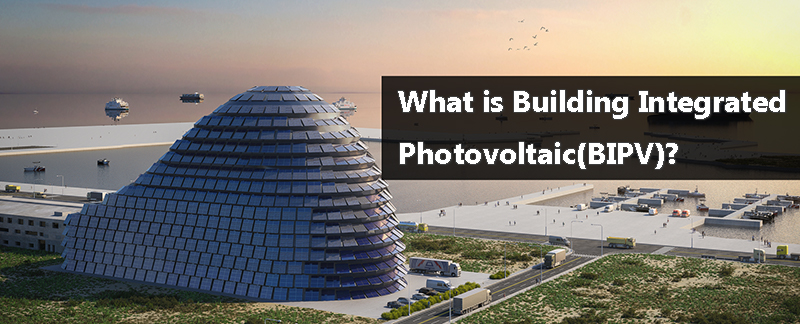
The two are designed and constructed at the same time, and the photovoltaic power generation components become part of the building materials, and have the dual functions of power generation and building materials at the same time, forming a unity of photovoltaic and building. BIPV is a new form of photovoltaic building, which has higher requirements for PV modules. While meeting the functional requirements of photovoltaic power generation, photovoltaic modules should also take into account the basic functional requirements of the building, do not affect the architectural function of the installation site of PV modules, and coordinate with the building to maintain a unified and harmonious appearance of the building.
2.Design points for BIPV
① Photovoltaic module form
When designing BIPV, the exterior color of the building should be considered first, so that it can be organically integrated with the building as a whole and be in harmony with the surrounding environment of the building to ensure overall harmony and beauty. If the BIPV components of the PV curtain wall are not in harmony with the appearance of ordinary glass, it will affect the overall appearance of the facade. BIPV can be easily integrated with the building glass through the color matching technology of the front panel glass to achieve the color consistency of the BIPV components of the curtain wall and the glass, and achieve a harmonious appearance, but it will cause a certain loss of power generation.
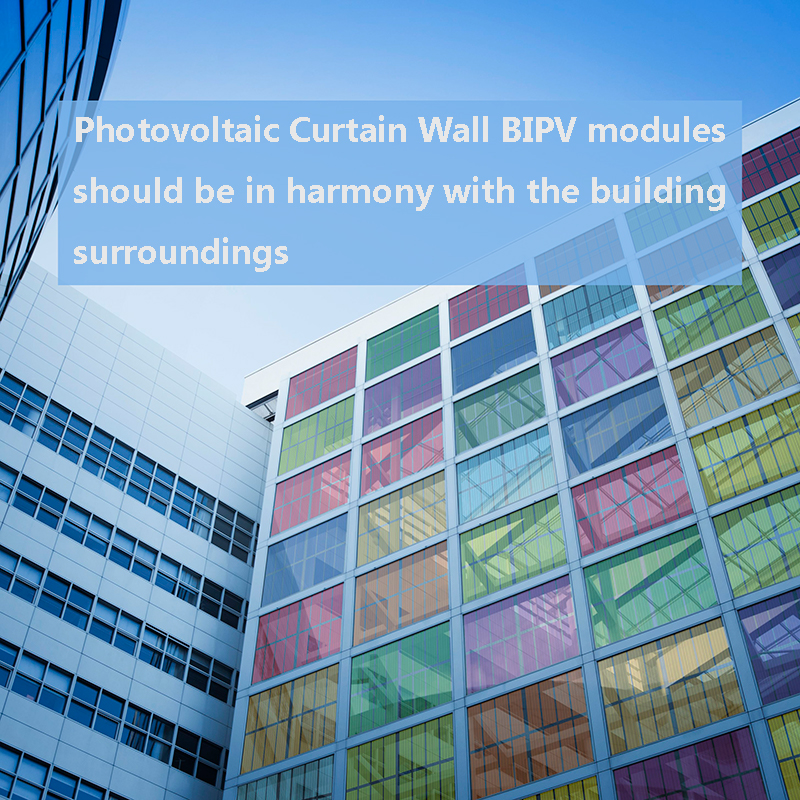
The curtain wall BIPV component classification adopts the basic model for the window wall and the lighting roof area that do not require high thermal insulation performance, and uses the hollow model for high thermal insulation performance requirements. Color front panels can be added according to the needs of the architectural profession. When applied to the skylight, the color PVB film BIPV solution can be used, which can not only reduce the product cost, but also will not reduce the photoelectric conversion efficiency of BIPV. The use of colored front glass will cause a certain loss of product power. Secondly, when designing BIPV, not only the light transmittance of the curtain wall, but also the photoelectric conversion efficiency should be considered. Generally, 10% to 20% light transmission can be selected for the lighting roof, and 40% or 50% light transmission can be selected for the areas with high light transmission of the facade curtain wall.
② Wiring form
Finally, attention should be paid to the wiring form when carrying out BIPV design. There are various forms of curtain wall. When different forms of PV curtain wall are wired, the location of the junction box, the wiring position and the wiring form will be inconsistent. In order to avoid randomness, the adaptive selection of wiring can be carried out. The common form of junction box is shown in the figure below.
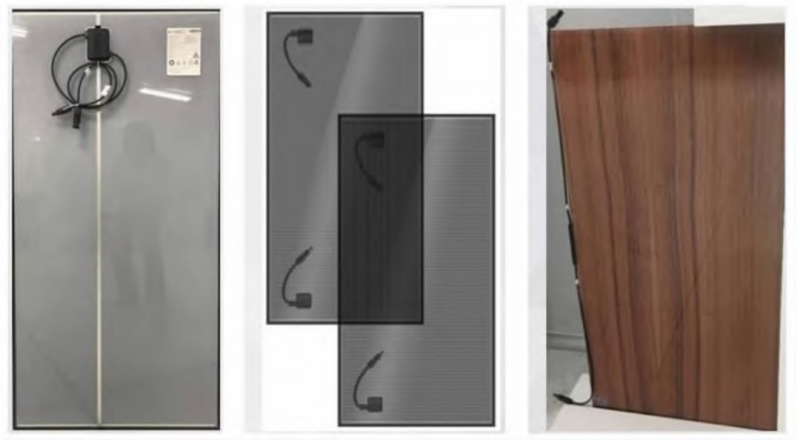
Common forms of junction boxes
3. Selection of photovoltaic cell modules
① Types of PV modules
At present, the more common types of photovoltaic cell modules on the market are thin-film solar cells cadmium telluride (CdTe), monocrystalline silicon (Cz-Si), and polycrystalline silicon (mc-Si) solar cells. Cadmium telluride thin-film solar cells are a fast-developing photovoltaic device among thin-film solar cells, and their conversion efficiency reaches 16%. The conductive film of CdTe adopts SnO2:F with good light transmittance. Almost all visible light can pass through the n-type CdS window layer, and the p-type CdTe is used as the absorption layer, which has a very high light absorption rate. In actual use, the display module has a low temperature coefficient, good low-light effect, high stability, small hot spot effect, low power attenuation rate for long-term use, and a service life of up to 50 years.
Monocrystalline silicon solar cells generally use P-type monocrystalline silicon wafers as substrates, and the module efficiency of products currently on sale is above 20%. Its manufacturing technology is relatively mature, with fewer defects in the crystallization, relatively high conversion efficiency, high reliability, and relatively stable characteristics, but the manufacturing cost is relatively high. Polycrystalline silicon solar cells also use P-type monocrystalline silicon wafers, and the conversion efficiency of module cells is about 19%. Polysilicon is square and has the highest fill rate when making battery modules. The polysilicon production process is simple, the performance is stable, and it can be mass-produced.
② Selection method of photovoltaic cell modules
The selection of photovoltaic cell components is based on factors such as solar radiation, climate characteristics, site area, etc., mainly from the following aspects.
- Sunlight, temperature, humidity, dust, etc. should be considered.Thin-film solar cell modules have advantages over crystalline silicon modules for areas with low solar radiation and large scattered components and high ambient temperature. Thin-film solar modules have good low-light effect, and the effect is obviously better than that of crystalline silicon cells with indirect bandgap materials under low-light conditions in the early morning and evening. However, crystalline silicon solar cells have advantages over thin-film solar cells for areas with high solar radiation and large scattering components.
- The installation location should be considered.When installed on the roof, crystalline silicon can be used for good load-bearing roofs, and film can be used for general load-bearing roofs. When making photovoltaic curtain walls, thin films are more beautiful than crystalline silicon in architectural applications.
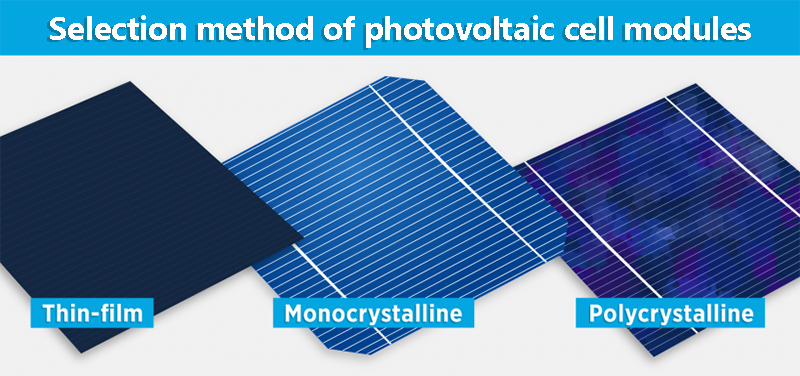
- Considering the conversion efficiency of the battery, compared with the crystalline silicon battery, CdTe has the advantages of low temperature coefficient, good low-light effect, strong anti-shading ability, etc. Under the same installed capacity, the power generation of CdTe products is higher than that of crystalline silicon products.
- From the perspective of cost performance, the cost of crystalline silicon is lower than that of thin film, the cost of thin film is a little higher, and the period of cost recovery is also a little longer.
When designing a BIPV building, it is especially necessary to consider whether the voltage and current of the panel itself are convenient for the selection of photovoltaic system equipment. The facade of a building may be composed of geometric figures of different sizes and forms, which will result in different voltages and currents between components. Therefore, it is necessary to work closely with the architectural profession to partition and adjust the building facade, so that the BIPV modules are close to the electrical performance of standard modules. At the same time, cells of different sizes can also be used to meet the requirements of division, and the most matching products can be selected to maximize the effect of building facades.
4. Experimental testing when BIPV adopts photovoltaic curtain wall method
① Anti-hail, shotgun impact experimental testing
After the test, the photovoltaic glass can achieve no falling off from the mounting bracket, no splashing glass fragments, and no broken holes, indicating that there is no problem with its safety performance.
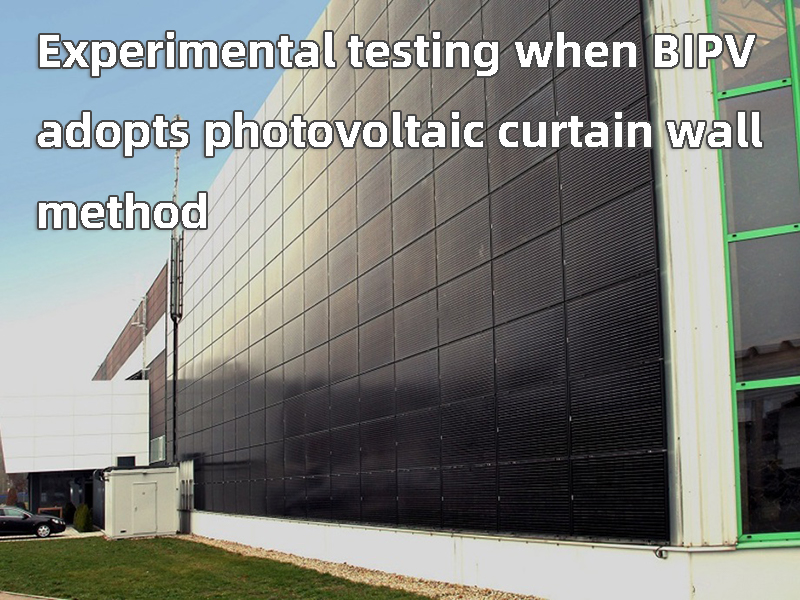
② Wet leakage current experimental testing
By simulating the influence of the humidity caused by the rainy and snowy climate into the inside of the components, it will cause corrosion leakage or safety accidents on the circuit. After tests, BIPV glass modules have a low current density and can work normally even in harsh environments, and a circuit breaker is installed on the photovoltaic building to prevent the occurrence of fire and ensure building safety.
③ Weak-light resistance experimental testing
Through scientific experiments, it was found that BIPV glass modules also have the advantage of low-light power generation. Even under weak natural light conditions, photovoltaic module can still achieve photoelectric conversion to ensure stable power supply.
5.Summary
BIPV is one of the solutions to realize the green, energy-saving and environmental protection of buildings. It has broad development space and huge market potential. BIPV not only saves energy, but also reduces emissions. This is the technology and product to achieve the "dual carbon" goal in the construction field. In the future, we will see more photovoltaic curtain walls, photovoltaic roofs, photovoltaic windows and photovoltaic sheds.
Related article: top 10 photovoltaic battery companies, top 5 photovoltaic cell companies in China